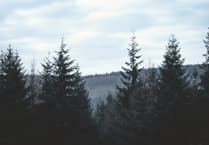A PHOTOGRAPHY exhibition devoted to the paths and rivers of Dartmoor is being staged until November 17 at the National Park Visitor Centre in Princetown.
The exhibition, ‘As Heath Flowers Bloom’, features work by Jake Tebbutt, a photographer working in and around the South West and who is currently studying for a BA in photography at the University of Plymouth.
Tracing the rivers, woods, valleys and moorland that make the National Park, As Heath Flowers Bloom is a photographic exploration of the landscape.
Working in collaboration with the Dartmoor Hill Farm Project, and the farmers who help manage this environment, Jake’s study follows the routes often used by those seeking to protect the area, nurturing it for future generations.
Rebecca Martin, Dartmoor National Park Authority’s visitor services manager, said: ‘We’re delighted to be putting on this exhibition and showcasing Jake’s work.
‘Many people will know Dartmoor for its tors but its rivers, woods and valleys are equally as fascinating and have their own stories to tell.
‘At the same time people can browse our retail range and pick up books, guides, leaflets, or gifts – many of which are sourced locally.
‘Visiting our exhibitions helps support locally-based artists as does buying local, and we look forward to welcoming people.’
First designated in 1951 Dartmoor National Park is the largest and highest upland in southern Britain.
With 734km public rights of way and 46,000 hectares of open access land it is home to a variety of wildlife and habitats.
It is particularly noted for rare lichens, butterflies and other insects, some of which are so rare they can only be found on Dartmoor.
Dartmoor National Park Authority works in partnership with communities, local authorities, businesses and other organisations to look after this special landscape and promote its conservation and enjoyment. The Authority runs three visitor centres at Princetown, Haytor and Postbridge.
The visitor centre at Princetown is in the former Duchy Hotel; a famous guest was Sir Arthur Conan Doyle who stayed there when writing Sherlock Holmes’s adventure Hound of the Baskervilles.
It has been a visitor centre since the early 1990s and hosts a variety of exhibitions and displays as well as a children’s discovery zone.



